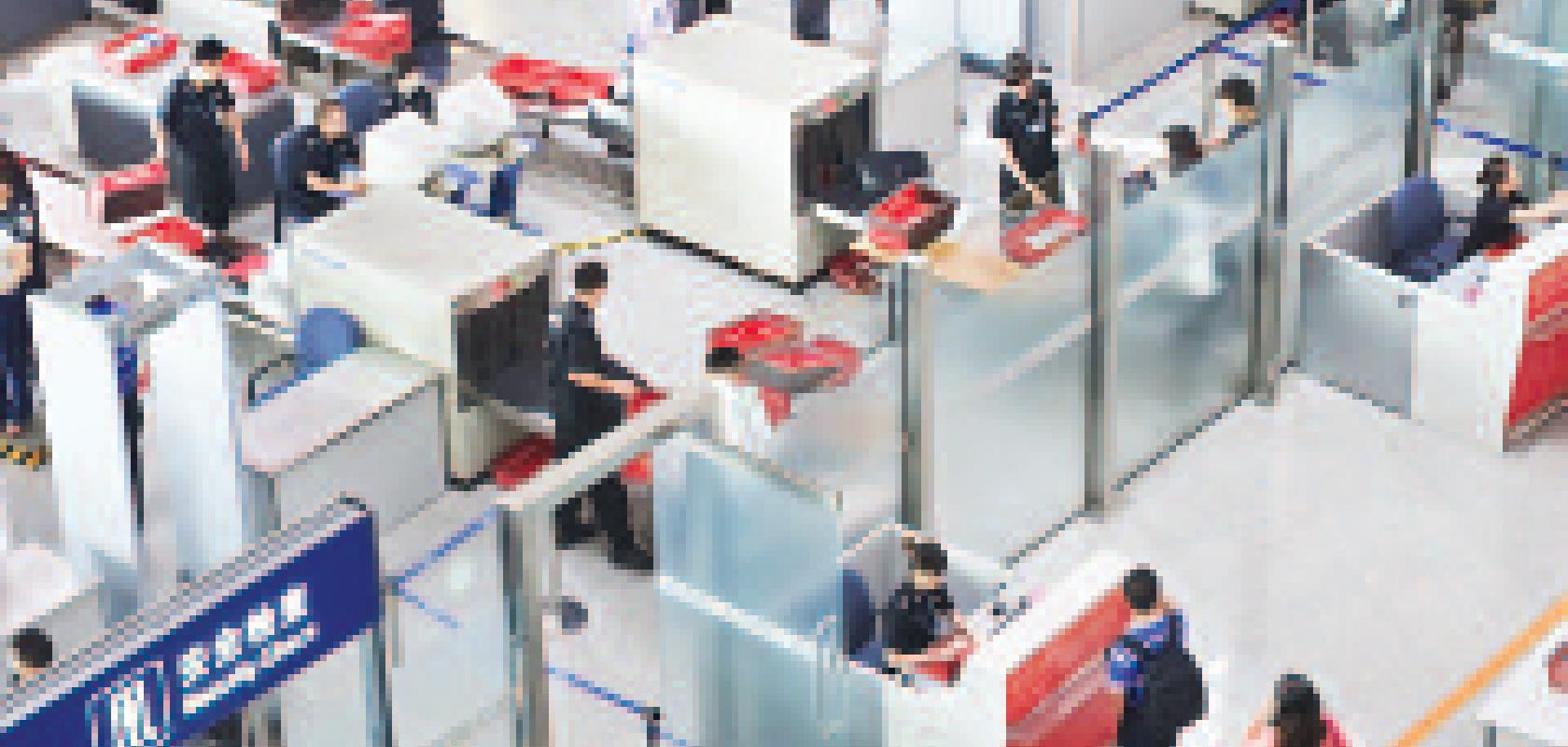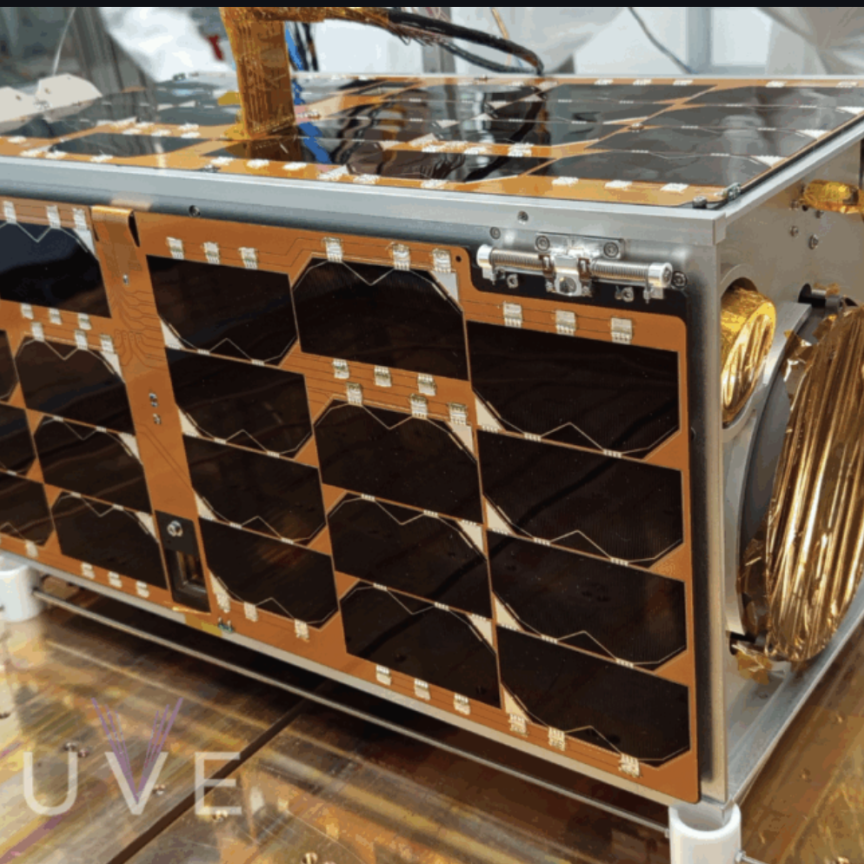The ban on carrying liquids of more than 100ml onto commercial flights from Europe remains in effect until suitable methods to screen liquids for explosives are available. The technology is still being trialled – but, according to the European Commission, restrictions could be lifted early next year.
Spectroscopic techniques for detecting explosives include mass spectrometry and ion-mobility spectrometry, but Raman spectroscopy also has a place – Raman spectrometers from Smiths Detection, Thermo Scientific, and Cobalt Light Systems are all suitable liquid explosive detection systems (LEDS) and could be part of the measures to screen liquids carried in hand luggage.
‘The advantage of Raman spectroscopy is in deriving a measurement very quickly,’ remarks Eric Bergles, VP sales and marketing at spectral instrument provider BaySpec. BaySpec’s customers include the UK Ministry of Defence (MOD) and the FBI – the latter using the instruments in mobile labs for investigative work. BaySpec has also supplied Raman spectrometers for a security service monitoring a subway network. Its Raman instruments were ready to make accurate readings within two minutes, says Bergles, whereas a mass spectrometer takes at least an hour to warm up and calibrate before measurements can be made.
Raman spectroscopy produces a spectral fingerprint of a sample, providing information on the chemical composition of the compound and the phase of the material, whether it’s a liquid or a solid. The spatial resolution is high and fast, with a spectrum typically produced in a few seconds.
Raman used to be a laboratory-based technique, but now portable and handheld instruments are available, taking advantage of telecom components to reduce the power consumption and size of the device, and bring down the cost. Higher power lasers also improve the resolution of the devices. This makes them more suited to explosive material and threat detection, but the technology still suffers from interference from fluorescence, which can mask the Raman signal. ‘It’s [Raman] a very weak effect to begin with,’ says Bergles, ‘with one photon from a million returned from the sample.
‘One reason why Raman hasn’t been used more widely for threat detection is that a lot of explosives are compounds bound together with polymers,’ he continues. ‘Fluorescence from the materials making up the compound can mask the Raman signal.’
There are ways to combat the effects of fluorescence; exciting the sample at longer wavelengths being one – BaySpec’s Agility benchtop Raman spectrometer has a choice of excitation wavelengths including 532nm, 785nm and 1,064nm, or dual-band 532/1,064nm and 785/1,064nm. ‘Measuring at a longer wavelength of 1,064nm reduces the fluorescence,’ says Bergles.
Operating at 1,064nm does reduce the background fluorescence but, in general, silicon detectors are less sensitive at longer wavelengths, notes Stuart Nunn at Laser Components, which supplies parts for Raman spectrometers. He adds that InGaAs detectors offer an alternative for longer wavelengths, but they cost more.
On the laser source side Volker Pfeufer, product line manager at Coherent, suggests diode lasers or the company’s optically pumped semiconductor lasers (OPSLs) as potential excitation sources, because of the broad range of wavelengths they offer. OPSLs are compact, have low power consumption, and excellent beam quality making them ideal for portable Raman spectrometers.
The disadvantages with diode lasers is their relatively poor beam quality and the potential for variation in the wavelength of light they produce from batch to batch, complicating the optics and the detector used. ‘For Raman spectroscopy, the excitation wavelength must be stable [and] the linewidth narrow,’ says Pfeufer. ‘A big advantage of an OPSL is that the wavelength is stable and the beam quality is excellent.’
Cobalt Light Systems addresses the problem of fluorescence via its spatially offset Raman spectroscopy (SORS) technique. The method was invented at Rutherford Appleton Laboratory in the UK, and is the underlying technology upon which Cobalt Light Systems was established. It allows chemical analysis of materials inside opaque objects, such as plastic bottles in the case of liquid screening at airports.
SORS works by subtracting a surface Raman measurement from one taken at an offset position. In this way, the contents of the bottle can be analysed without interference from signals from the plastic material of the bottle itself. According to Cobalt Light Systems, the technology can detect liquid and powder explosives in a wide range of plastic containers, including white plastic bottles. It can identify powder explosives concealed in green fluorescing glass bottles or wrapped in a layer of cotton wool, both of which conventional Raman spectroscopy would struggle to achieve.
Shifted excitation Raman difference spectroscopy (SERDS) is another technique that can be used to improve the signal in the presence of large amounts of background fluorescence. It uses two lasers closely spaced in wavelength, differing only by around 1nm. ‘The Raman spectra returned from the sample shifts with the excitation wavelength, but any background fluorescence remains constant,’ explains Nunn at Laser Components. ‘Therefore, subtracting one signal from the other can cancel out a huge proportion of the background fluorescence.’ He does note, however, that the noise effect of the two wavelengths is also summed, so an overall signal-to-noise benefit is only apparent when there is high background fluorescence. The uptake of SERDS is still low, says Nunn, because it costs more – but it could be useful for security applications in the future.
According to Michael Allen, director of marketing and product development at Ocean Optics, another obstacle that needs to be overcome with Raman is the ability to sample from a larger area to identify the active ingredient. ‘Explosives are a lot like narcotics or pharmaceuticals in that there are other fillers and reaction molecules that make up the compound along with the active ingredient,’ he says. Having a very narrow sample area means the explosive material in the compound is likely to be missed and just the filler portion identified.
Ocean Optics’ IDRaman Mini instrument uses Raster Orbital Scanning (ROS) to increase the sensitivity of the system and the measurement area. The laser beam is mechanically rotated over the sample to cover a surface area of two to three mm. The device maintains high resolution using a focused beam, but, by raster scanning the laser, provides a low average power and higher sensitivity. The latest version of the IDRaman Mini is based on a 100mW laser, which translates to 50 to 70mW power at the sample. Scanning over a larger effectual spot size improves the likelihood of identifying the explosive constituent.
‘Explosives identification and the security market is a big growth area for Ocean Optics,’ says Allen. ‘We have customised products for certain clients, and sales of the handheld solution are also likely to grow in the security sector. At the moment, there’s no real standard concerning identification of explosives,’ he continues. ‘That would be helpful to better position our capabilities. That’s something we’ll work on with customers.’
Library of explosives
Despite the challenges with fluorescence and sample area, Raman spectroscopy has the advantage of being able to identify a huge number of different compounds, crucial for explosives detection where the chemical makeup of an explosive can vary by subtle degrees. ‘The beauty of Raman spectroscopy is that the user can build libraries of an almost infinite number of compounds,’ says Bergles at BaySpec, ‘and to a high level of specificity as well, to the point where you can detect the signature of an explosive/polymer mixture unique to a certain geographical region. The explosive can be characterised and you can pinpoint where it is likely to have originated.’
In terms of the instrumentation, a direct sampling capability is an advantage rather than relying on a fibre optic probe, says Bergles, (BaySpec offers a direct measurement device as well as fibre optic probes). ‘Raman is a very weak effect, so you have to do everything you can to optimise the power on the laser and the sensitivity of the detector. Using fibre optics introduces signal loss; about 40 per cent of the signal is lost through the coupling with fibre optics,’ he says. Direct sampling therefore removes this potential loss.
Whether the Raman instruments being trialled to screen liquids at airports are installed remains to be seen, but the technology is effective for threat identification and work continues to improve the sensitivity as well as building compact systems and reduce the cost. It is an identification method rather than a detector per se – Raman can’t determine if there are explosives in a room, but it can scan clothing for trace levels of powder residue or examine liquid samples – and it, for the main part, lacks any kind of standoff measurement capacity – which would be useful for explosives identification – but it is a powerful tool for the military and security forces to work alongside other threat detection techniques like mass spectrometry.


